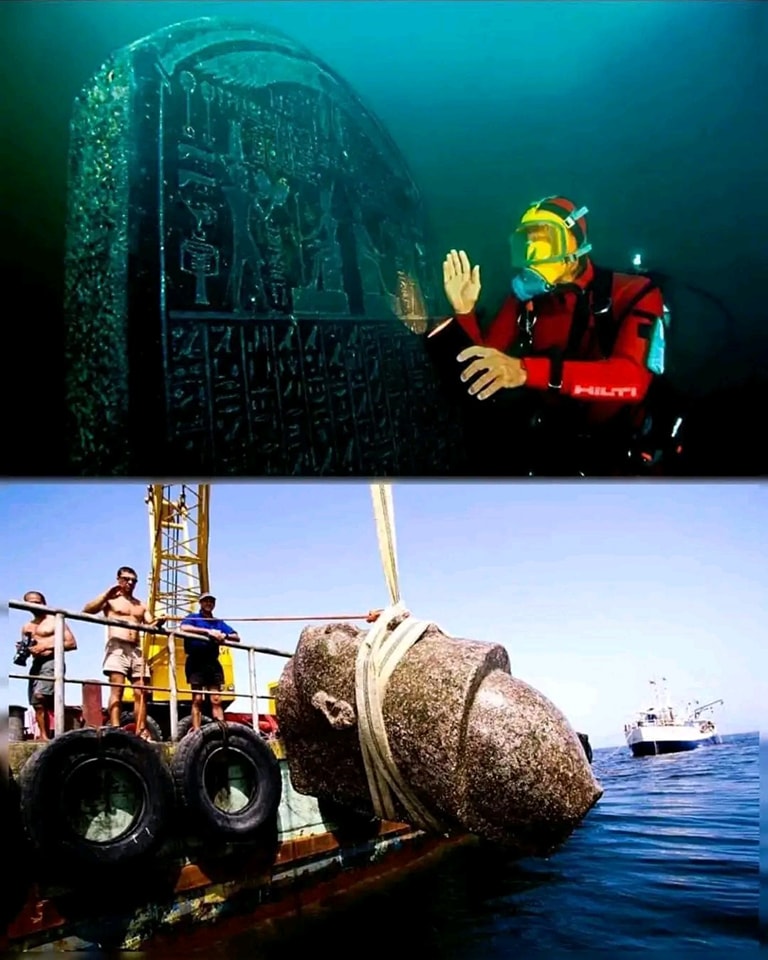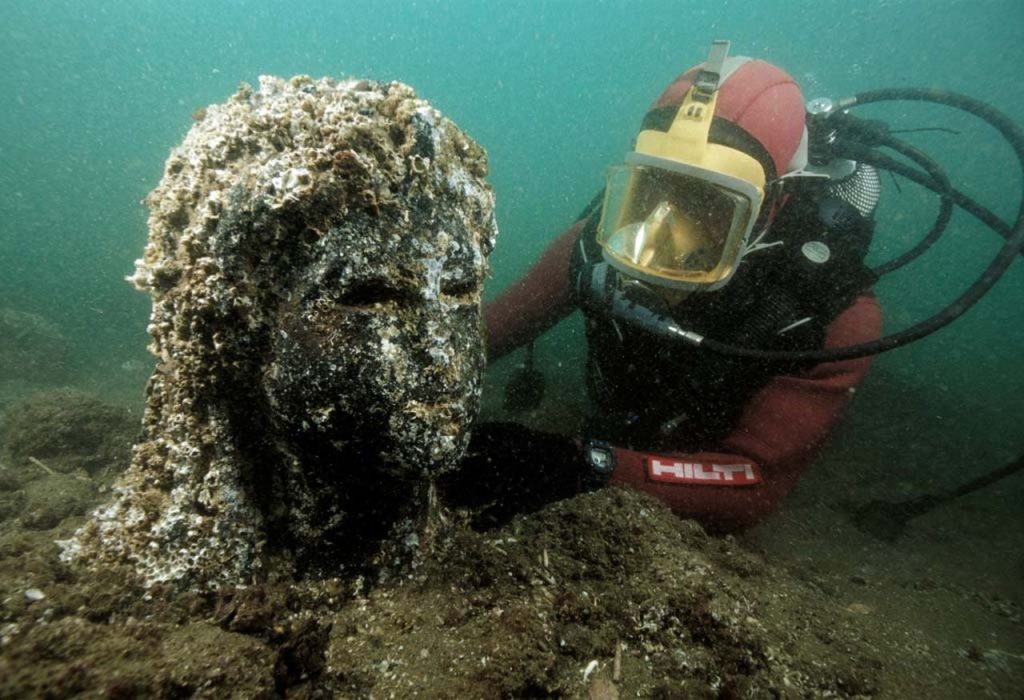For centuries, the ancient Egyptian city of Heracleion was thought to be a mere legend, a tale as elusive as the famed Atlantis. Once a bustling hub of Mediterranean trade, this vibrant city vanished beneath the sea nearly 1,200 years ago, its splendor concealed by the waters. Over time, Heracleion faded into the annals of history, leaving no trace of its existence.

That all changed in the year 2000 when a team led by underwater archaeologist Franck Goddio uncovered the city’s remains in the Bay of Aboukir, just off Egypt’s coast. After years of meticulous underwater exploration, the sunken city revealed itself, offering an extraordinary glimpse into the past. This rediscovery ignited one of the most significant archaeological missions of modern times, unearthing a trove of remarkably preserved ruins and artifacts that shed light on Heracleion’s lost glory.
Piecing Together the Puzzle of a Sunken Civilization
The rediscovery of Heracleion was the culmination of years of pioneering work by Goddio’s European Institute for Underwater Archaeology (IEASM), established in 1987. Using advanced techniques to map and survey the seafloor, the team methodically combed through Aboukir Bay, guided by ancient texts from historians such as Herodotus and Strabo, who had referenced the legendary city. By 1999, cutting-edge geophysical methods had pinpointed the locations of Heracleion and another long-lost city, Canopus.
When divers began to remove layers of silt, Heracleion’s grandeur emerged from the shadows of history. Among the discoveries were colossal statues of pharaohs and gods, building inscriptions combining Ancient Greek and Egyptian scripts, hundreds of anchors from ancient shipwrecks, coins, sarcophagi, and everyday items that once thrived in this bustling port. Each find painted a vivid picture of a maritime city that bridged cultures and civilizations.
Restoring the Glory of a Sunken World
Once the city’s treasures were brought to light, the IEASM embarked on an ambitious project to share their findings with the world. With the approval of Egyptian authorities, they launched the touring exhibition “Egypt’s Sunken Treasures,” which displayed over 200 artifacts in major museums worldwide. These exhibitions offered an unparalleled opportunity for the public to connect with a civilization that had been submerged for over a millennium.
The artifacts presented included intricately carved statues, jewelry, and ceremonial items that revealed the city’s cultural and economic significance. The British Museum hosted one of the most notable exhibitions, attracting millions of visitors eager to experience this rediscovered marvel. Despite uncovering only about 5% of Heracleion’s ruins, the findings have already provided invaluable insights into its history, leaving archaeologists eager to explore the remaining 3.5 square kilometers of the site. However, given the sheer scale of the city—three times the size of Pompeii—it could take centuries to fully uncover its secrets.
An Engineering Marvel Lost to Time
The rediscovery of Heracleion also raised compelling questions about its decline and ultimate submergence. Through geological research, experts determined that a combination of natural factors contributed to the city’s downfall. Gradual soil subsidence, coupled with rising sea levels, undermined the stability of the region. Heracleion’s intricate network of canals, which had earned it the nickname “Venice of the Nile,” eventually succumbed to these forces, leading to the city’s demise.
By the late 8th century AD, Heracleion had slipped beneath the Mediterranean, its marvels buried under silt and water. This tragic fate highlighted the fragile balance between human ingenuity and the forces of nature, as the very conditions that had allowed the city to flourish as a major port ultimately led to its destruction.
The Sleeping Giant Awakens
The revival of Heracleion from its watery grave has not only provided a window into the past but also ignited hope for the rediscovery of other legendary sites. If a city once dismissed as myth could be unearthed, what other ancient wonders might await beneath the ocean’s depths? The mysteries of humanity’s maritime heritage are far from fully unraveled, and Heracleion stands as a testament to the resilience of history, even when buried for centuries.

Archaeologists now look to emerging technologies to aid their quest for submerged cities. Tools like sonar imaging, advanced robotics, and geophysical mapping have revolutionized underwater exploration, making it possible to uncover sites once deemed unreachable. The rediscovery of Heracleion has inspired a new generation of explorers eager to uncover more of the secrets concealed in the ocean’s vast expanse.
As researchers continue their work, each new find from Heracleion enriches our understanding of the ancient world. Whether it’s a monumental statue, a coin bearing the likeness of a forgotten ruler, or an inscription blending Greek and Egyptian influences, these artifacts serve as tangible links to a past civilization that once thrived at the crossroads of cultures.
A Gateway to Endless Possibilities
The rediscovery of Heracleion has opened the door to an entirely new realm of archaeological exploration. It serves as a reminder of the endless possibilities that await those who dare to look beyond the surface. The story of Heracleion is not just about a city lost to time; it is a testament to human curiosity, resilience, and the relentless pursuit of knowledge.
As we stand on the shores of what remains uncovered, the allure of the unknown continues to drive archaeologists forward. Heracleion’s rise from the depths has proven that the myths of the past can hold grains of truth, waiting to be revealed by those willing to dive deep enough to find them.





